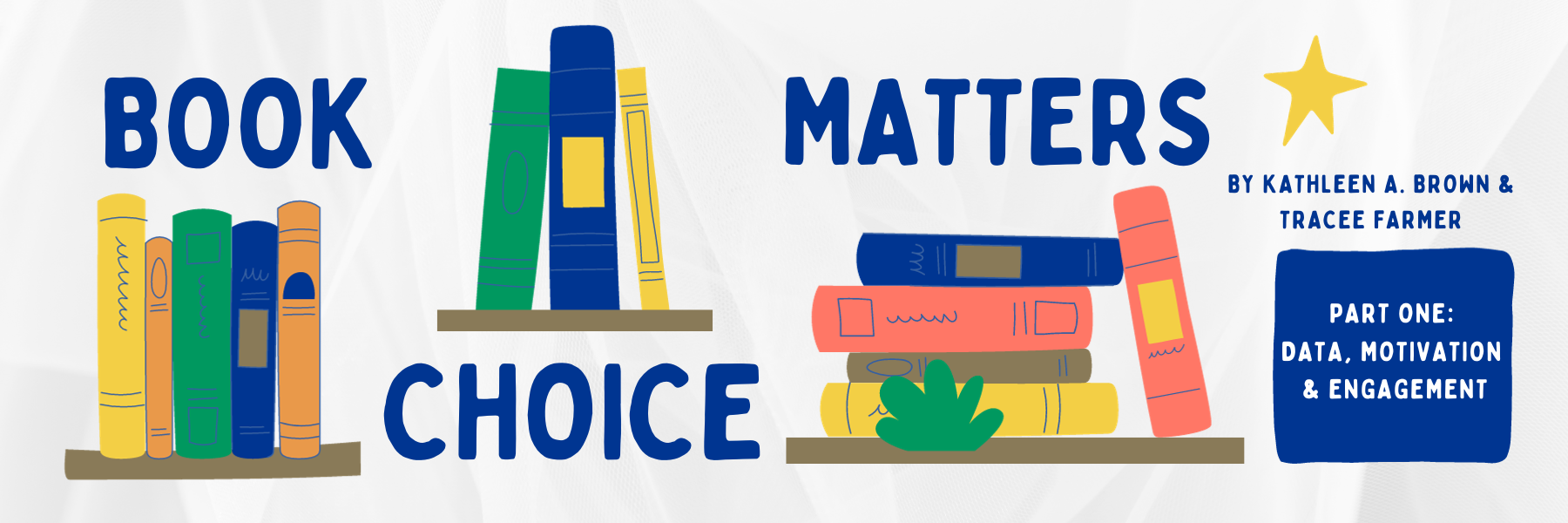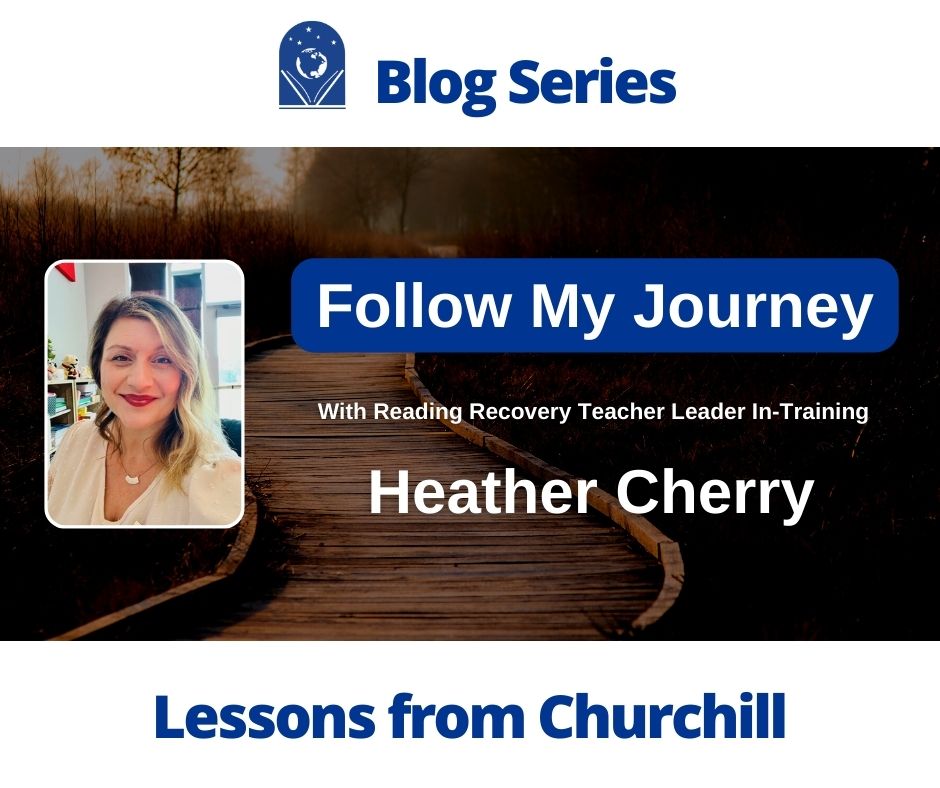BLOG
Book Choice Matters Part One: Data, Motivation, and Engagement
Every day in a Reading Recovery lesson, we have the opportunity to introduce a new book to the child sitting beside us. In Literacy Lesson Designed for Individuals (LLDI), Clay advised us to select a book that “should challenge the child’s processing system but not upset it” (p. 113). That’s not an easy task.
Book selection is at the heart of our work as Reading Recovery teachers. Matching texts to readers requires educators to examine various factors when choosing books for individual students. In this blog, we will explore data that will help support book selection, the role of motivation and engagement, the variety of texts that students should be exposed to, and the overarching goal of creating lifelong readers.
The first thing many teachers think about is the child’s instructional level, which is important, but selecting a book is about more than a level. We need to look at all the data that is available. At the beginning of the lesson series, teachers have data from the Observation Survey (OS) and often data from the Record of Oral Language. In addition to records of oral reading, teachers have observational notes taken across the lesson, specifically during familiar reading and the reading of the new book. In LLDI, Clay guided teachers to record “what you did and how the child responded” (p. 35) on lesson records. This will help you determine whether your teaching moves or prompts were helpful.
The writing portions of the lesson are also important. Clay wrote that writing is the “Cinderella of the literacy world” (OS, p. 101). Through the writing, we can notice what children attend to in print, what structures may be emerging or controlled, and how they approach problem-solving. When analyzing your records, consider what the child initiated and where support was needed in both reading and writing. These observations offer valuable insight to help guide our ability to look at each book through the lens of the individual child and consider what opportunities and challenges are between the covers.
Motivation and engagement are two factors worth pondering and exploring when selecting texts. In Peter Afflerbach’s book Teaching Readers, Not Reading, he states, “The relationship between motivation and engagement is characterized by reciprocity: Engagement influences motivation, and vice versa” (p. 107). He goes on further to explain, “Motivation and engagement influence both reading development and reading achievement. The role of motivation and engagement in human learning is documented across decades of research, and it has been a focus of high-quality teaching for millennia” (p.106).
What are some of the factors that fall under the umbrella of motivation and engagement?
- Prior knowledge
- Life experiences
- Interests
- Cultural relevance
- Language considerations
- What is within the student’s control?
- Success
- Joy
The many facets that drive motivation and engagement depend on the students you work with during literacy teaching and learning. Selecting texts without knowing your students well is like fumbling around in the dark in a new location, hoping to find the light switch. Although you may eventually find the light switch, along the way, you trip over some shoes, run into some furniture, and stub your toe on the edge of the bed. A verbal outburst may follow as well. That is what it feels like for students trying to maneuver through a text that is too hard or for which the student has little prior knowledge, experience, interest, cultural connection, or success. There is no joy involved, just frustration and drudgery. In an Education Week interview on February 1, 2023, Gholdy Muhammad voiced the following, “I suggest making joy a learning goal.” She goes on to encourage educators with this thought, “I want teachers to consider texts that are responsible to the histories, identities, literacies, and liberation of students.”
Book choice is much more than levels, sources of information, and strategic processing. We must equally consider other aspects, such as motivation and engagement. Otherwise, we will only target our instruction in a limited way, which will bring about limited success. Kate DiCamillo sums it up best: “Reading should not be presented to children as a chore or duty. It should be offered to them as a precious gift.” As educators, we must do our due diligence to get to know our students so well that book choice is tailored to each student’s needs and our students thrive in literacy learning.
In the second part of this blog, we will address using a variety of texts across the lesson series and questions to consider when selecting books to help students create a self-extending system and become lifelong readers and learners.
 Kathleen A. Brown has worked for 37 years as a classroom teacher, literacy specialist, staff developer, and Reading Recovery teacher. She has served as the Reading Recovery teacher leader in a large urban district in California for the last 22 years. Kathleen has provided early literacy training and coaching for the district and has presented at local, state, and national conferences. Kathleen serves on the Reading Recovery Council of North America board as secretary and is affiliated with St. Mary’s College.
Kathleen A. Brown has worked for 37 years as a classroom teacher, literacy specialist, staff developer, and Reading Recovery teacher. She has served as the Reading Recovery teacher leader in a large urban district in California for the last 22 years. Kathleen has provided early literacy training and coaching for the district and has presented at local, state, and national conferences. Kathleen serves on the Reading Recovery Council of North America board as secretary and is affiliated with St. Mary’s College.

Dr. Tracee Farmer is a Reading Recovery Trainer and Partnerships in Comprehensive Literacy Trainer at National Louis University. Tracee has been in education for 30 years. In addition to her work in Reading Recovery, Tracee taught 1st-3rd grades, K-5 special education, small group interventions, and was a literacy coach.
References:
Afflerbach, P. (2022). Teaching readers (not reading): Moving beyond skills and strategies to reader-focused instruction. Guilford Publications.
Beers, G. K. (2023). When kids can’t read, what teachers can do: A guide for teachers, grades 4-12. Heinemann.
Clay, M. M. (2015a). Becoming literate: The construction of inner control (Rev. ed.). Portsmouth, NH: Heinemann.
Clay, M. M. (2016). Literacy lessons designed for individuals (2nd ed.). Portsmouth, NH: Heinemann.
Clay, M. M. (2019). An observation survey of early literacy achievement (4th ed.). Portsmouth, NH: Heinemann.
Ferlazzo, L. (2023, February 1). Gholdy Muhammad champions “unearthing joy” in her new book (opinion). Education Week. https://www.edweek.org/teaching-learning/opinion-gholdy-muhammad-champions-unearthing-joy-in-her-new-book/2023/02
Guthrie, J. T. (1999). The young reader as a self-extending system: Motivational and cognitive underpinnings. In J. S. Gaffney & B. J. Askew (Eds.), Stirring the waters: The influence of Marie Clay (pp. 149-164). Portsmouth, NH: Heinemann.
THE JOURNAL OF READING RECOVERY
Spring 2025
OPEN ACCESS: Centering Children and Working Towards Equity: Teaching All Children to Read by Catherine Compton-Lilly
Literacy Leadership in Support of Equity: Whatever It Takes by Allison Briceño
Exploring the Purposes, Power, and Potential of Familiar Reading by Jamie Lipp
Full Circle: From Student to Psychologist by Joyce Romano




